Mullein, formally known as verbascum thapsus, is often times called velvet plant or elephant’s ear due to the hairy leaves that are, rather than being prickly as are most fuzzy looking plants, quite soft and supple.
This herb can be found abundantly in most environments, even where no one intended it to grow, and like many plants that people call weeds, it has many uses in everyday life and particularly in survival situations. In taking a look back at how our forefathers used mullein, we can get a good idea of how it could help us if the world as we know it comes to an end.
Practical Uses
The soft fuzzy nature of mullein gives its leaves plenty of practical applications, both historically and in survival situations. The rest of the plant could potentially play a role in a SHTF situation, as well.
 TP- Before the advent of toilet paper or simply in a pinch in the woods, this leaf makes for a soft, pleasant toilet paper alternative. In fact the folk name of this plants is The Cowboy’s Toilet Papper. The large leaves and gentle texture make it an ideal solution, though you should be cautious to wipe with the grain of the hairs to reduce irritation caused by shedding fuzz. Here are more homemade substitutes for toilet paper.
TP- Before the advent of toilet paper or simply in a pinch in the woods, this leaf makes for a soft, pleasant toilet paper alternative. In fact the folk name of this plants is The Cowboy’s Toilet Papper. The large leaves and gentle texture make it an ideal solution, though you should be cautious to wipe with the grain of the hairs to reduce irritation caused by shedding fuzz. Here are more homemade substitutes for toilet paper. - Providing Warmth- They are also great for providing extra warmth. Whether you’re lining your clothing with these leaves to provide extra cushion and warmth, or preparing a blanket or small shelter from them to stay warm at night, the furry leaves are great for adding extra insulation.
- Fire Starting- Mullein has several fire building applications. The stalks make an ideal implement for the bow or hand drill fire starting methods. The dried leaves and seed pods are fantastic tinder for fire starting. Dipped in any liquid fat, flammable sap, or beeswax, the seed heads attached to the stalks are great for torches, earning mullein, along with the yellow flowers, another of its nicknames: golden torch.
- Fish Tranquilizer- The seeds of this plant can be used as a paralytic agent of fish. This could help in collecting fish for food or other purposes in a survival situation.
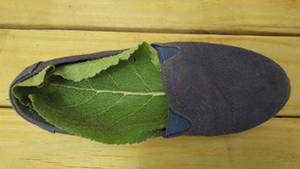 Shoe Insoles- The leaves can provide cushion in shoes when conventional insoles are no longer an option. Combined with the medicinal properties of the leaves, mullein leaf insoles can help to reduce friction that causes blisters and keep feet free from infection.
Shoe Insoles- The leaves can provide cushion in shoes when conventional insoles are no longer an option. Combined with the medicinal properties of the leaves, mullein leaf insoles can help to reduce friction that causes blisters and keep feet free from infection.
Related: If You See This Plant, Whatever You Do Don’t Touch It!
Medical Applications
These plants, which are found in the wild and in herb gardens all over the world, have been used by healers for ages for assorted uses. As is always the case, be cautious when using herbal remedies to treat any condition, and you should consult a physician before using herbal medicine (assuming one is available).
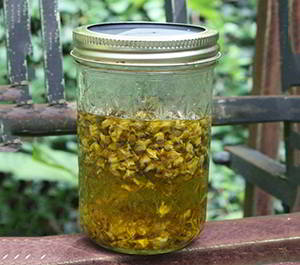 Chest Complaints- The dried or fresh flowers of the mullein plant are often used to improve coughs and other lung and airway issues such as bronchitis, asthma, or croup. Historically, it was frequently used to treat consumption, or tuberculosis. Tea made from mullein with honey added makes a great sore throat cure. It is a well-known cold and flu remedy. It’s great for these things because of its expectorant and soothing properties, plus its ability to fight infection.
Chest Complaints- The dried or fresh flowers of the mullein plant are often used to improve coughs and other lung and airway issues such as bronchitis, asthma, or croup. Historically, it was frequently used to treat consumption, or tuberculosis. Tea made from mullein with honey added makes a great sore throat cure. It is a well-known cold and flu remedy. It’s great for these things because of its expectorant and soothing properties, plus its ability to fight infection.- Pain Reliever, Anti-Inflammatory, Soother- This plant is said to help reduce pain and inflammation when used topically on the affected area or in a tonic or tea with effects similar to aspirin or modern day NSAIDs and acetaminophen. The ability to apply this anti-inflammatory skin soother topically makes it an ideal remedy for hemorrhoids, as well.
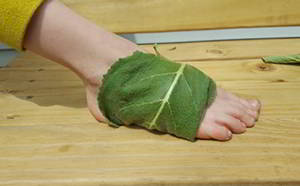 Infection Fighter- Cowboy’s bandages is called just that because it makes a great bandage, even where more modern alternatives are available. This is because it has antibacterial, antiviral, and antifungal properties. This means that along with providing a soft, gentle barrier, the leaves of the mullein plant can help fight off infection in wounds. Tea made from the mullein plant has also been used as a sort of internal antibiotic for treating mild infections. Clinical indications show that mullein may be an effective home remedy for ear infections when placed directly into the ear as a part of an herbal solution. Here are 5 infections you are most likely to catch when SHTF.
Infection Fighter- Cowboy’s bandages is called just that because it makes a great bandage, even where more modern alternatives are available. This is because it has antibacterial, antiviral, and antifungal properties. This means that along with providing a soft, gentle barrier, the leaves of the mullein plant can help fight off infection in wounds. Tea made from the mullein plant has also been used as a sort of internal antibiotic for treating mild infections. Clinical indications show that mullein may be an effective home remedy for ear infections when placed directly into the ear as a part of an herbal solution. Here are 5 infections you are most likely to catch when SHTF.- Helps Heal Bruises and Other Injuries- A poultice of mullein leaves and flowers is oftentimes used to improve the condition of bruises and damaged connective tissue or bones. The pain relieving and anti-inflammatory properties of this plant make it ideal for helping broken bones and sprains and strains to be less painful. Here is a DIY guide with pictures on how to make your own healing salve.
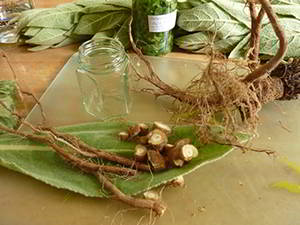 Bladder Health Support- This herb, the root in particular, is often used to help support the urinary system. It is frequently used to treat urinary incontinence in bedwetting children and adults with bladder control issues. Urinary tract infections may also be treated with mullein.
Bladder Health Support- This herb, the root in particular, is often used to help support the urinary system. It is frequently used to treat urinary incontinence in bedwetting children and adults with bladder control issues. Urinary tract infections may also be treated with mullein.
In the Garden
- Adding Plant Life in Areas Ravaged by Animals- Most animals, like goats and deer, avoid eating mullein. This means that the hearty herb is a great way to keep an area from being eaten down to soil when these animals are damaging the landscape. Keeping plant life in the soil can help to prevent erosion and flooding in an area.
- Adds Nitrogen to Soil- This plant gives vital nitrogen back to the soil, so it can be used to improve soil conditions for other plants, particularly plants that need lots of nitrogen. Because it is so easy to find, identify, and grow, it would be an ideal way to build up soil in the event that you needed to produce more food in a small space, like an urban SHTF scenario.
- Attracts Good Insects, Deters Bad- Mullein blooms attract pollinators that help plants to reproduce, and it is repellent to many bugs that many do your garden harm. Planting it is easy, and it will grow almost anywhere, so consider planting it around your garden in order to provide an insect barrier.
You may also like:
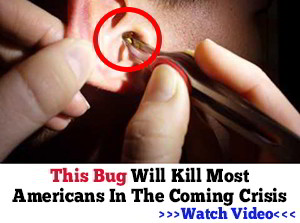 Top 8 Deadly Plants in the U.S. That You Need To Avoid
Top 8 Deadly Plants in the U.S. That You Need To Avoid
World’s Smallest Battery Powers House For 2 Days (Video)

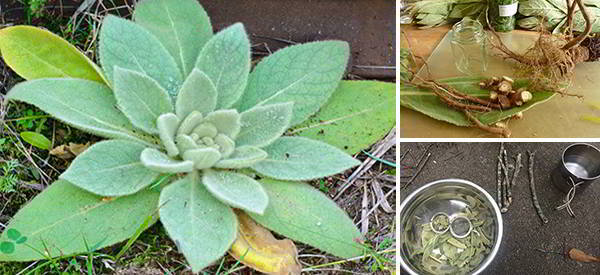



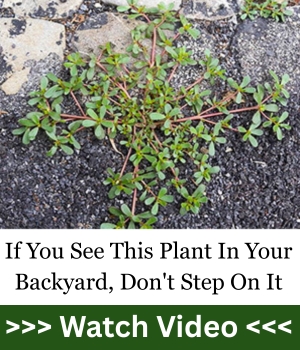
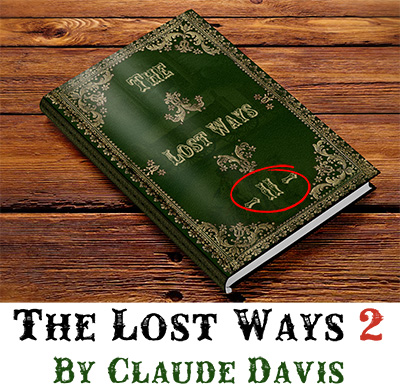
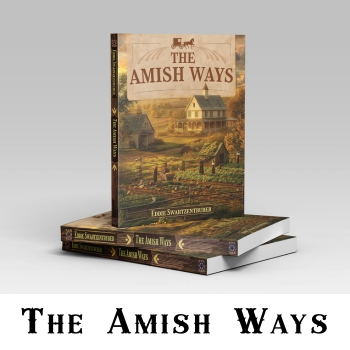

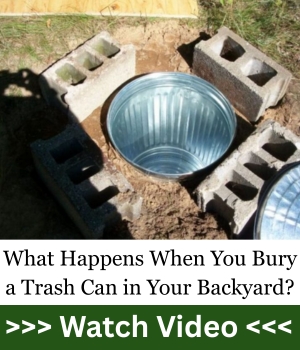






This is GOOD info!! I think I will add this to the survival garden!!
Excellent as I have used some of these isdeas many times.
I would add that in treating serious asthma attacks, direct smoke inhalation works as well. One asthmatic friend used to keep rolled cigarettes with him containing a mixture of mullein and other herb–some illegal at the time, now medicinally legal in many states. He relayed that he had also used an electric burner on a stove and green leaves when that was the only thing available to generate mullein smoke.
I would advise not selecting mullein growing within 50′ of railroad tracks. As a former Railroad employee, I can tell you that such a location is within the herbicide spraying range of railroads. Most railroad maintenance departments spray their right of ways and may not be forthcoming with what they used.
I found this growing wild in my flower garden and didn’t know what it was until I happen to have a native American over and he spotted the plant and stated that the tribal council would buy these from me at a great price , the older the Mullen plant the better especially when it seeds out at the end of summer ! They have taught me how to do everything with it including making it ready for smoking ! Directions for the smoking is found on YouTube and trust me you can’t go wrong ! Now it’s growing wild all over my property in upstate New York ! I always have enough to last year round now ! ( I was going to pull it and toss it because I thought it was a Milkweed plant , so glad I didn’t !
Hello, I can’t find the YouTube video. Please post the link. Thx
Mullein plants often have straight tap roots. Pull up a dried stalk, strip the leaves and some of the seed head & you have a spear that is a great toy for kids.
I can’t count the hours I spent running around in the woods armed with my Spear!
While this may be a good plant it will take over. very invasive . Id be careful cultivating it
Great information, thank you. I would, however, caution against using mullein as a TP substitute. That very fine fuzz on the mullein leaf may seem appealing, but it comes off of the leaf and sticks into the skin and irritates it like fiberglass insulation. Thankfully, I was not the victim, but a good friend of mine was, and hearing his story was enough to convince me to look for alternative means.
On the contrary, if you research mullein, you will find that the Native American Indians used it for TP. I have used it as TP and not had ANY reactions to it.
A good remedy for that irritation is wood glue PVA, just put it all over your hands wait to dry and enjoy peeling it off. Like when we were children in school art class. It works on other similar irritants, ???
a dried cane can be shellacked and used as “a cane”…very lightweight, strong in axis, cut to desired height…add a rubber tip,
dad used to make these, splicing in a piece of grapevine or other for handle…. strong durable, light, unique….very handy for older folk.
Your plant looks the same as what we called Lamb’s ear.just looked up Elephant’s ear it looks totally different too and its called Colocasia..Lamb’s ear is “Stachys byzantina” so thats not it .. it looks like it but has tall stalk with the flowers on top…So your “verbascum thapsus” is also Mullein plant but didn’t find it being called elephant ear..Hey I could be wrong just got lost when I read elephant ear..
yup
Mullein is a biennial plant. It grows roots and a small rosette of leaves the first year (like the photo) then grows larger leaves, sends up a tall flower stalk and makes seeds the second year. If you want to save seed for a disaster scenario, keep in mind the two year life cycle of the plant. The plant can attract some insects and may have insect eggs on the leaves, so use care when applying leaves to wounds or as a TP alternative. The seed head can have 10 thousand seeds or more which is why it can become invasive. It does not tolerate shade, requires disturbed soil and sunlight to germinate, grows well in dry climates. Seeds remain viable in the soil for several years. Animals won’t eat unless there is nothing else available to them.
Hunters looking for Doves to shoot-at, will search for fallow fields with plenty of Mullein Plants producing seeds. … Doves will eat Mullein-Seeds, like wealthy fatcats gobbling down Caviar and gurgling Champagne.
My Pa LOVED mullein and it grew all over his compound. He made mullein tea every day. Pa’s mullein grew fine in the shade. In fact, I don’t think he had any that grew in the sun. And it was non invasive. This was in N Florida
I agree. They are so easy to pull up and non invasive. They like ground where nothing else is growing.
I have not seen this in my area. Is there somewhere that I could order seeds from? I’m in Northwest Florida. I would love to try to grow this. Thanks for any helpyou can offer. Tamara
How do I process this for medicine, ? Dry it, ? Tincture, balm.?
Also add Comfrey to your collection of herbs…Do the research.
another plant you should have is PLANTEGO for bites
and stings
I believe you’re referring to Plantago (Plantago Major) also commonly known as Plantain.
It is a wonderful medicinal herb used for many of the same things this article recommends Mullein for. I understand was originally brought from Europe, & called “White Mans Foot Prints” by Native Americans. It’s a very common plant in most peoples yards & unknowingly called a “weed”. You can look it up online.
The ONLY Plant in your First Aid kit ??/ Really ? Catchy Headline but Informationally wrong and limited. DOZENS of Plants can go in the First aid kit… And, there is common confusion between Mullein and Lambs’ Ears, but they are Not the same…
plantego??? are you kidding??? WITCH HAZEL
is the best plant around from acne, hemorrhoids, poison ivy, bees, spiders, snake bites, boils to foot rot. antiseptic, antibacterial, antimicrobial reduces swelling, and stretch marks, and it is found in high end cosmetics as well and you can plant it outside in your yard for a flowering privacy fence.
My mother always had Witch Hazel on hand. A good astringent.
Ye gads! This grows all over my land.I’ll never be without T.P.!!!Yeah!!!
If saving to a first aid kit, do the leaves dry up to crumble-dust to become useless? If dry, are the leaves still able to perform? No info is given regarding how best to save these things for any emergency kit or pack.
Isn’t that what they also call skunk weed or skunk cabbage?
No
The thick, soft green leaves that are sometimes called “cowboy toilet paper.”
Pregnant women should not drink this tea.
Be careful growing it. Mullein is invasive (which is one of the reasons it’s such an excellent prepper plant).
Growing Mullein is a dandy idea.
anyone know if using the roots after the stalk has dried out is still of use? lots of dried shoots left and wanted to see if the roots are still of good use
I was disappointed that many of the plants did not include how to use them such as tea, poultice, chewing or ingesting them. It would of been more helpful for me.
This was intended for the 23 medicinal plants post not the mullien, sorry.